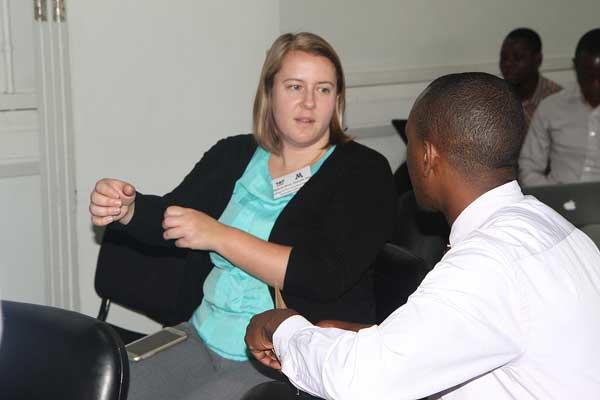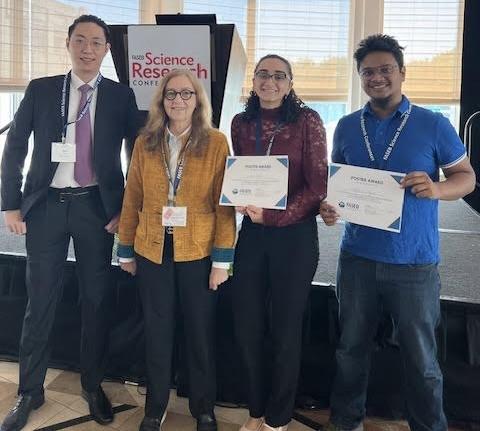Center for Drug Design’s ProteXidine™ could change how we address sun protection and anti-aging skincare
August 7, 2024
Erin Wilson

The Center for Drug Design (CDD), part of the University of Minnesota College of Pharmacy, created a novel technology using biomimetic decoy molecules to boost the skin's natural ability to mitigate ultraviolet-induced damage, a development that has the potential to revolutionize the skincare industry.
The CDD team behind the technology includes the founding director, Dr. Robert Vince; head of cosmetic and product innovation, Dr. Abbas Raza; and senior scientist, Christine Dreis.
ProteXidine™ helps prevent premature aging and augments the skin’s process of clearing out damaged cells and replacing them with healthy ones. Most sunscreens absorb UV light using molecules with aromatic rings, but the light energy cannot be destroyed, so the molecules still have to convert it into something else— usually by giving off heat into the skin or producing unfriendly molecules. DNA molecules are composed of four nucleobases, one of which is called thymine, strung together like beads on a string. UV exposure promotes the formation of thymine dimers (CPDs) in the DNA of epidermal cells, which leads to mutations. The team hypothesized that linking two thymine units could mimic a natural DNA segment. This decoy molecule absorbs UV light and protects natural DNA while still attracting the repair enzymes naturally triggered by the removed thymine dimer, Vince and Raza explained. ProteXidine™ therefore maintains collagen density while preserving the skin's structural integrity, preventing wrinkle formation and premature aging.
The idea for ProteXidine™ was born out of Vince’s interest in seeing what help the CDD could provide to the cosmetic industry. He also taught a course that covered cancer-causing agents, including UV light, and believed there must be a better method of preventing its damage to the skin.
"I think people would be astonished at how much damage happens in just a few minutes if you sent somebody outside under sun for, say, 15 minutes, then took a skin sample and showed them the DNA damage," Vince said. “The damage is always present and constantly being fixed, but your cells can't keep up if you get too much of it."
ProteXidine™ is able to work with the body’s natural processes to remove the damaged cell while sending a chemical message that it needs to be replaced by a new, healthy cell, Raza explained.
The biggest hurdle so far wasn’t in the chemistry, or even the funding— the project was funded by royalties Vince earned through other inventions, allowing them to progress at a much faster pace— instead, the obstacle was finding someone who could identify the value in their discovery.
ProteXidine™ caught the interest of Topix Pharmaceuticals, which the U of M then entered into a licensing agreement with. Topix senior vice president Steve Hernandez said for 25 years he has been watching companies and organizations make claims of DNA repair that they haven’t been able to substantiate, until now. The company claims ProteXidine™ is a game changer for the industry.
“When we saw the molecule a few years ago and researched it, we knew that it had very, very high potential,” Hernandez said. “When we show laboratory data to the doctors, they are really excited because this is an area that dermatologists have been hopeful a real product could emerge from. So many people have tried and not come up with a real efficacious product.”
Topix launched the ProteXidine™ campaign with a cosmetic skin defense product and expect to follow close behind with sunscreen and an eye area treatment. The biopsies and clinical results produced using ProteXidine™ make it simple to demonstrate its potential, Hernandez said.
"It’s been very easy for me, because I’m able to show the clinical evidence and it speaks for itself,” he said. “It just shows the impact of not only the proof work that was done at the University of Minnesota, but the credibility that comes from the University and what is seen in the products tested.”
While the molecule originally began as a side project, the end product— born from the same minds behind the CDD’s internationally recognized research of anticancer agents, antiviral drug design, and early Alzheimer’s detection and treatment— could soon change UV protection as the dermatology field knows it.


